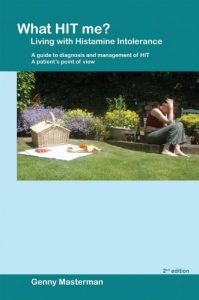HIT – Histamine Intolerance – is a condition that affects many people but remains largely undiagnosed. The symptoms of histamine intolerance (HIT) are caused by the inability of the body to break down histamine sufficiently. These symptoms can appear very like an allergy and can cause stomach and intestinal complaints, migraine, tiredness and skin problems, to name but a few. This is in most cases because of the reduced activity or low presence of an enzyme called diamine oxidase (DAO), which is mainly responsible for breaking down histamine and other biogenic amines ingested through food. Foods that are known culprits include: red wine, ready meals, cured meats, mature cheeses, tomatoes and aubergines. It can make people’s lives a total misery. But it CAN be brought under control with the RIGHT DIAGNOSIS and the RIGHT DIET. This book is a guide to how to achieve both. It helps both health professionals and patients gain insight.
After the great success of the first edition, this second edition contains a new section on the different points of view about diagnosis as well as a second food list - a tolerance index which resulted from a survey of 800 participants who judged 109 foods according to their individual threshold - side by side with the scientifically based food list.
CONTENTS- Introduction
- Histamine Intolerance – In a nutshell
- How do I find out if I have HIT?
- Other intolerances -DAO and its closest friends and helpers
- What HIT is not
- Specially for the ladies - HIT’s favourite targets
- How do I find out what to eat or not?
- What do I need to do at home?
- How do I keep the family happy?
- How can I deal with this at work?
- What do I need to keep in mind when shopping?
- What consequences are there for my social life?
- Meat - the good...the bad and the ugly
- Fish - the good... and the ugly
- Milk and Dairy Products – essentials
- Fruit & Vegetables - the little labyrinth
- Bread & Baking
- The problem with alcohol!
- Pharmaceuticals, food additives, E-numbers and other culprits
- Food lists and supplements
- Short summary of therapy options
- Recipes
- The Food Diary






